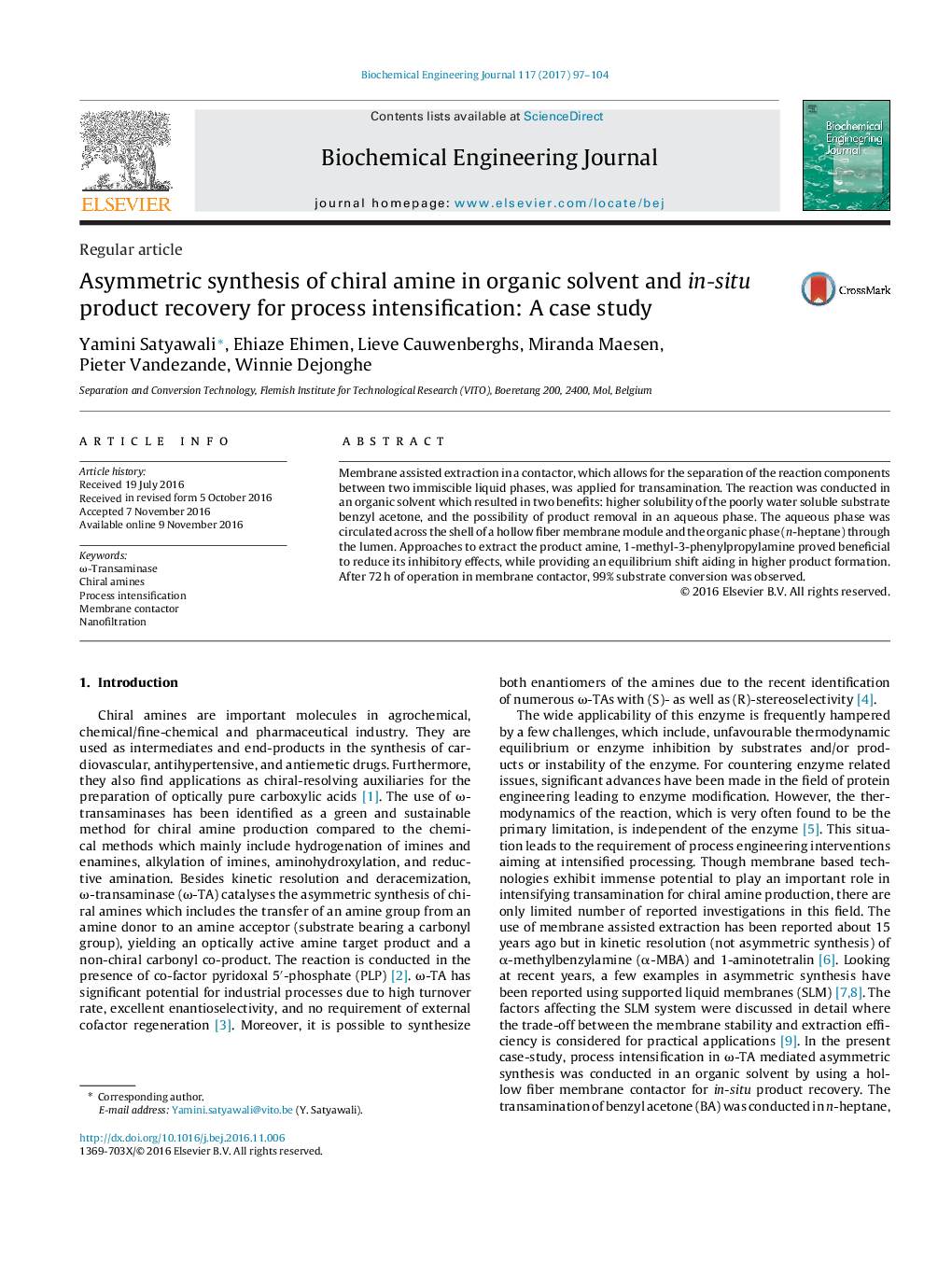| Article ID | Journal | Published Year | Pages | File Type |
|---|---|---|---|---|
| 6450448 | Biochemical Engineering Journal | 2017 | 8 Pages |
â¢Transamination was conducted in 100% organic solvent (n-heptane).â¢Increased the substrate concentration to 2.5-fold higher than its solubility in aqueous phase.â¢After 72 h of operation in membrane contactor, 99% substrate conversion was observed.
Membrane assisted extraction in a contactor, which allows for the separation of the reaction components between two immiscible liquid phases, was applied for transamination. The reaction was conducted in an organic solvent which resulted in two benefits: higher solubility of the poorly water soluble substrate benzyl acetone, and the possibility of product removal in an aqueous phase. The aqueous phase was circulated across the shell of a hollow fiber membrane module and the organic phase (n-heptane) through the lumen. Approaches to extract the product amine, 1-methyl-3-phenylpropylamine proved beneficial to reduce its inhibitory effects, while providing an equilibrium shift aiding in higher product formation. After 72Â h of operation in membrane contactor, 99% substrate conversion was observed.
